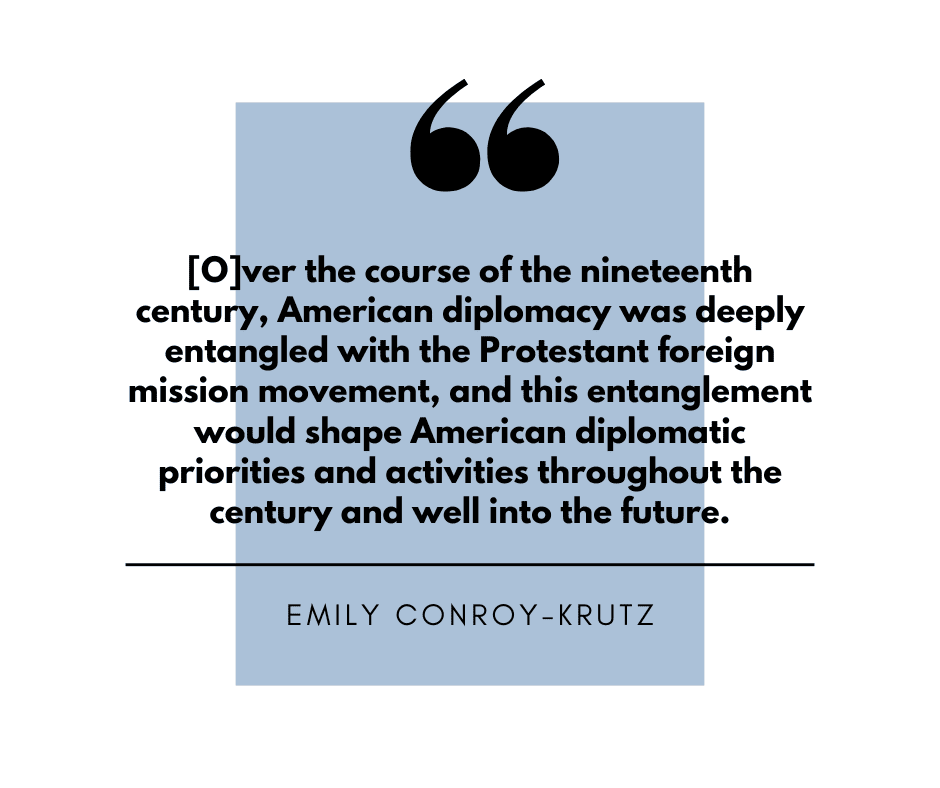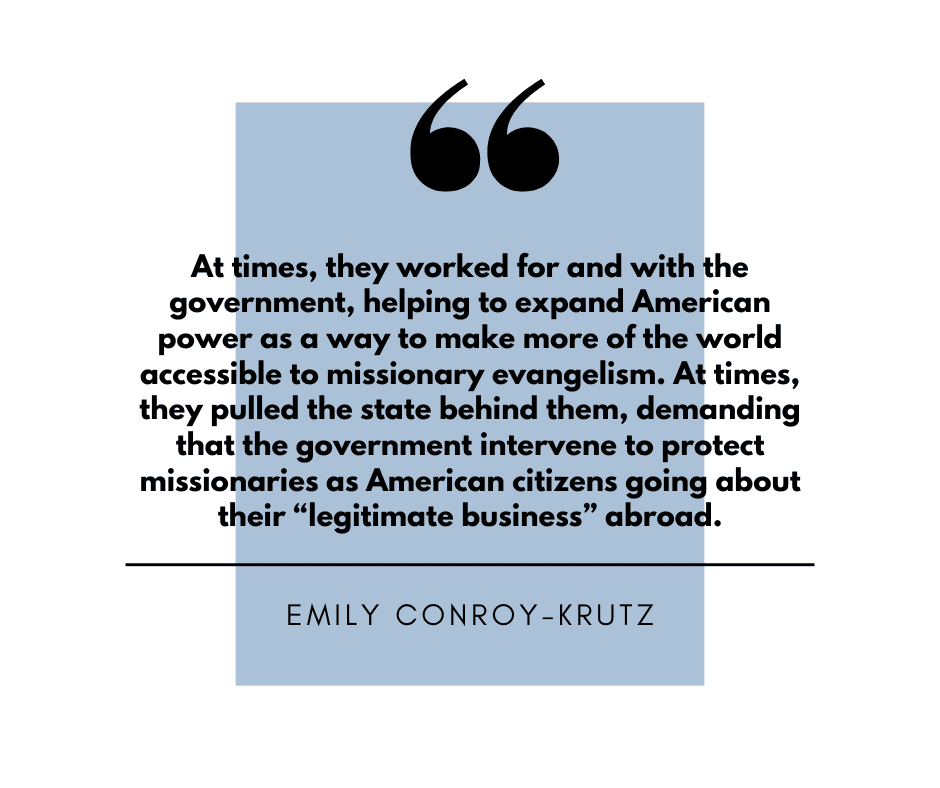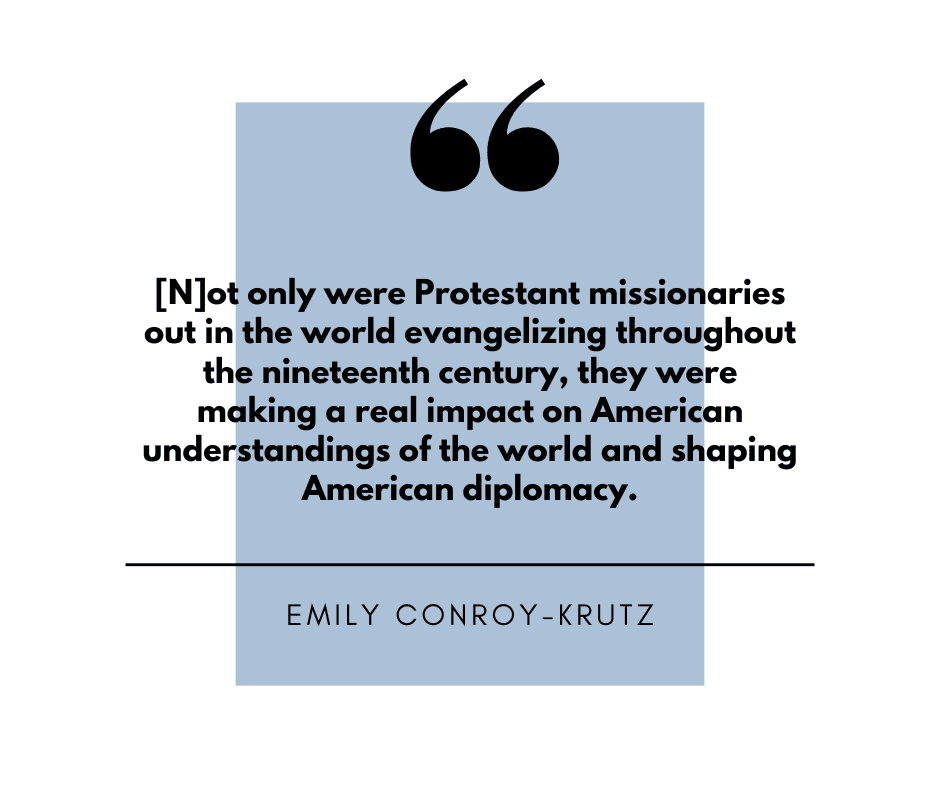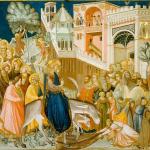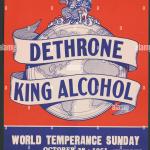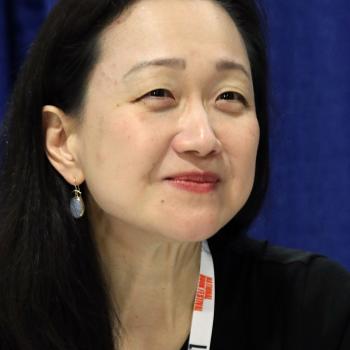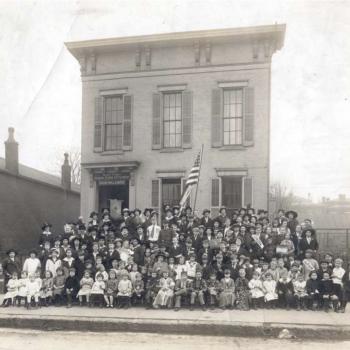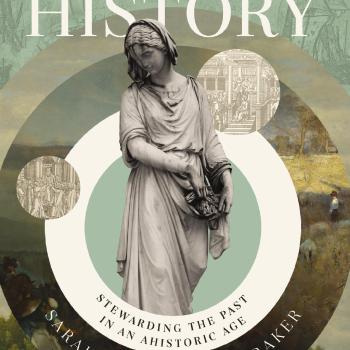 When I was doing the research for my book about Hmong refugee resettlement in the aftermath of the “Secret War” in Laos, I was intrigued and surprised by how frequently missionaries showed up in the archival sources. Missionaries, it seemed, were everywhere. In Laos, they introduced Christianity to Hmong people in both the highland regions and the cities. In Thailand, they provided essential medical care in refugee camps that housed Cambodian, Lao, and Hmong people displaced by genocide, famine, and war. In the United States, they sponsored Southeast Asian refugees for resettlement and advocated for generous refugee policies at a time when refugee resettlement was enormously unpopular. Missionaries were not only doing the obvious religious work of teaching about Christianity but were also doing important government work, shaping and implementing American refugee policy and serving as an essential source of resettlement labor and cultural knowledge for the government and its partners. And, importantly, the boundary between the religious work of missions and the non-religious work of refugee resettlement was blurry. Indeed, in the eyes of some Christians, refugee resettlement work was missionary work. As the missionary Malcolm Sawyer put it, the resettlement of Southeast Asian refugees in the United States was a moment when “missions has come home.”
When I was doing the research for my book about Hmong refugee resettlement in the aftermath of the “Secret War” in Laos, I was intrigued and surprised by how frequently missionaries showed up in the archival sources. Missionaries, it seemed, were everywhere. In Laos, they introduced Christianity to Hmong people in both the highland regions and the cities. In Thailand, they provided essential medical care in refugee camps that housed Cambodian, Lao, and Hmong people displaced by genocide, famine, and war. In the United States, they sponsored Southeast Asian refugees for resettlement and advocated for generous refugee policies at a time when refugee resettlement was enormously unpopular. Missionaries were not only doing the obvious religious work of teaching about Christianity but were also doing important government work, shaping and implementing American refugee policy and serving as an essential source of resettlement labor and cultural knowledge for the government and its partners. And, importantly, the boundary between the religious work of missions and the non-religious work of refugee resettlement was blurry. Indeed, in the eyes of some Christians, refugee resettlement work was missionary work. As the missionary Malcolm Sawyer put it, the resettlement of Southeast Asian refugees in the United States was a moment when “missions has come home.”
The involvement of missionaries in Hmong refugee resettlement is only one example in a long history of Christian missionaries playing a crucial role in American foreign policy. As Emily Conroy-Krutz shows in her new book, Missionary Diplomacy, missionaries have both contributed to and complicated American foreign policy since the early nineteenth century. Examining the period from the 1810s through the 1920s, Conroy-Krutz shows how Protestant missionaries shaped American foreign policy in Asia, Africa, the Pacific, and the Middle East. While they were often useful to the U.S. government as consuls and translators, these missionaries also created headaches for the State Department, to the point that government officials often wondered if the intertwining of missionary work and American diplomacy was in the best interest of the United States.
I had the good fortune of interviewing Emily Conroy-Krutz about her brilliant book, which was published by Cornell University Press earlier this month.
Melissa Borja: Tell me the story behind your book. How did you come to write on this topic?
Emily Conroy-Krutz: When I started the research for Missionary Diplomacy, I wanted to know more about how Protestant foreign missions affected the development of American foreign policy over the course of the nineteenth century. I had already written a book about missions and American ideas about empire in the first decades of the century, and so I thought I had a pretty good understanding of how missions could shape ideas about the world and about how the US ought to interact with foreign nations and empires. But I wanted to dig deeper into how those ideas shaped policy, and I had a hunch that understanding the deeper nineteenth-century history of the connections between religion and foreign relations would help us to understand twentieth and twenty-first century dynamics better.
MB: What do you argue in this book?
EKC: The short version of the book’s argument is that over the course of the nineteenth century, American diplomacy was deeply entangled with the Protestant foreign mission movement, and this entanglement would shape American diplomatic priorities and activities throughout the century and well into the future.
The reasons for this entanglement can be traced to a number of factors, but one of the most important ones is the different geographies that missionaries and diplomats occupied in the first half of the nineteenth century. That period of early development for both institutions saw different priorities lead to a focus on different parts of the world (Europe and Latin America for the diplomats; Asia, the Middle East, Africa, and the Pacific for the missionaries) and those differences would come to have long-lasting implications. Missionaries claimed that they were the American experts on the parts of the world where they were active, and over the course of the century they sought to shape not only public opinion, but diplomatic interests (and presence) in these regions. At times, they worked for and with the government, helping to expand American power as a way to make more of the world accessible to missionary evangelism. At times, they pulled the state behind them, demanding that the government intervene to protect missionaries as American citizens going about their “legitimate business” abroad. Though the connections between missions and the state were never uncontested, they had profound implications for the long-lasting importance of Protestant Christianity’s tacit role framing American diplomatic priorities.
MB: Tell us about the different scholarly interventions you hope to make through this book. Specifically, how does this book help us think about Christian missions in a new way? And American diplomacy and foreign relations?
EKC: As its title suggests, Missionary Diplomacy sits at the intersection of religious and diplomatic history, and it is making interventions in both fields. Religious historians will already be well aware that missions and missionaries mattered, and the book aims to expand our understandings of how this movement shaped (and was shaped by) American imperialism and changing ideas about race and gender. The book’s global focus should help us to think about the ways that missionary experiences in one region were connected to larger trends and concerns. While local conditions matter tremendously in shaping the experience of individual missionaries and would-be converts, the book’s focus on Washington also insists that we understand individual missions as part of a larger movement.
A focus on missions also helps us to re-interpret the history of nineteenth century foreign relations (with important implications for the twentieth century as well). Missionary Diplomacy helps us to understand that not only were Protestant missionaries out in the world evangelizing throughout the nineteenth century, they were making a real impact on American understandings of the world and shaping American diplomacy. When they served as translators and consuls, and when they reached out to American officials for assistance, they brought their religious priorities to bear on their understanding of American interests. If we want to understand how the State Department came to think about the rights of American citizens abroad, the importance of religious freedom as a diplomatic goal, the forms of American imperialism, and the value of humanitarian intervention, we simply must understand the history of nineteenth century missions and their connections to the American government.
MB: I’m intrigued by the structure of the book, in which you have eleven chapters, each focused on a different way to understand missionaries, from “politicians” and “consuls” to “troublemakers” and “imperialists.” Tell us how you developed the idea for this unique way of organizing your book.
EKC: I love this question, because how to structure this book was a major challenge! I wanted to tell a big story that covered a broad geography, long chronology, and long list of characters so finding a way to help readers navigate that took me a while. I ended up with a three-part organization that let me center the stories of individual missionaries and diplomats over the course of the century. The first part (including “politicians” and “experts”) focuses on the first half of the century and the ways that missionaries developed their claims of expertise over the world and created an American audience for their “missionary intelligence.” The second part covers the mid-to-late century with thematic chapters that dig into questions about citizenship, the consular system, violence, and how both missionaries and the State Department thought about the “secular” and “religious” work of missions. These are globe-hopping chapters, as none of these issues emerged in isolation. Events in China shaped activities in the Ottoman Empire, which shaped responses in Hawai‘i, and so on. In the third part, I shift to a case study approach to be able to go into greater depth with how these nineteenth-century developments shaped the relationship between church and state at the turn of the twentieth century. Chapters here look at the Philippines, China during the Boxer Uprising, the Congo Free State, and the Armenian Genocide.
MB: What project do you have coming up next?
EKC: I’m starting work now on a new book focused on the 1901-1902 world tour of Jennie and Arthur Judson Brown, with the working title Around the World with the Browns. They embarked on the trip at a transitional moment in American missions and empire, and it’s my hope that following them through their whirlwind tour (and the publicity that followed), we can better understand the interconnection of empire, religion, race, and gender at the dawn of the twentieth century.


